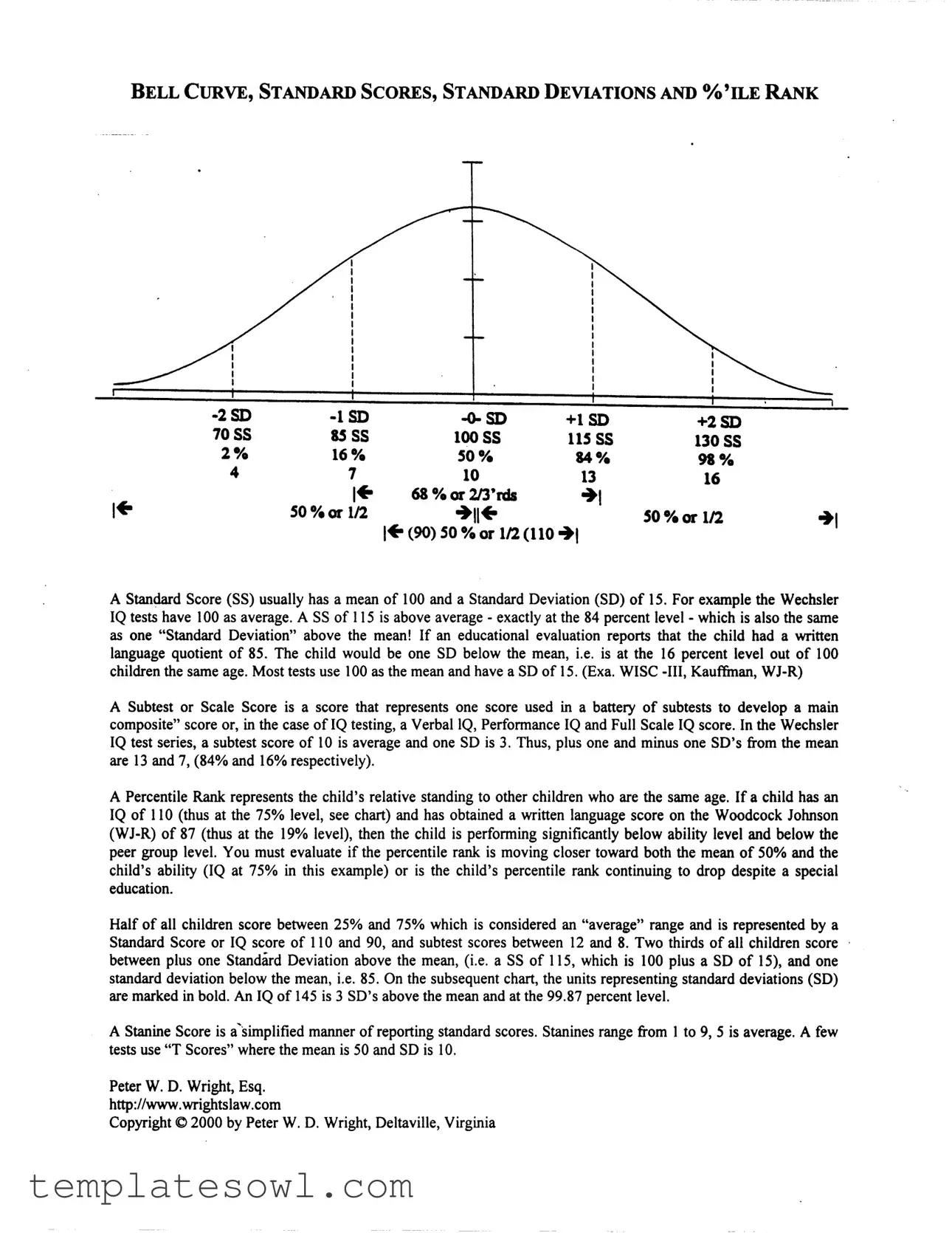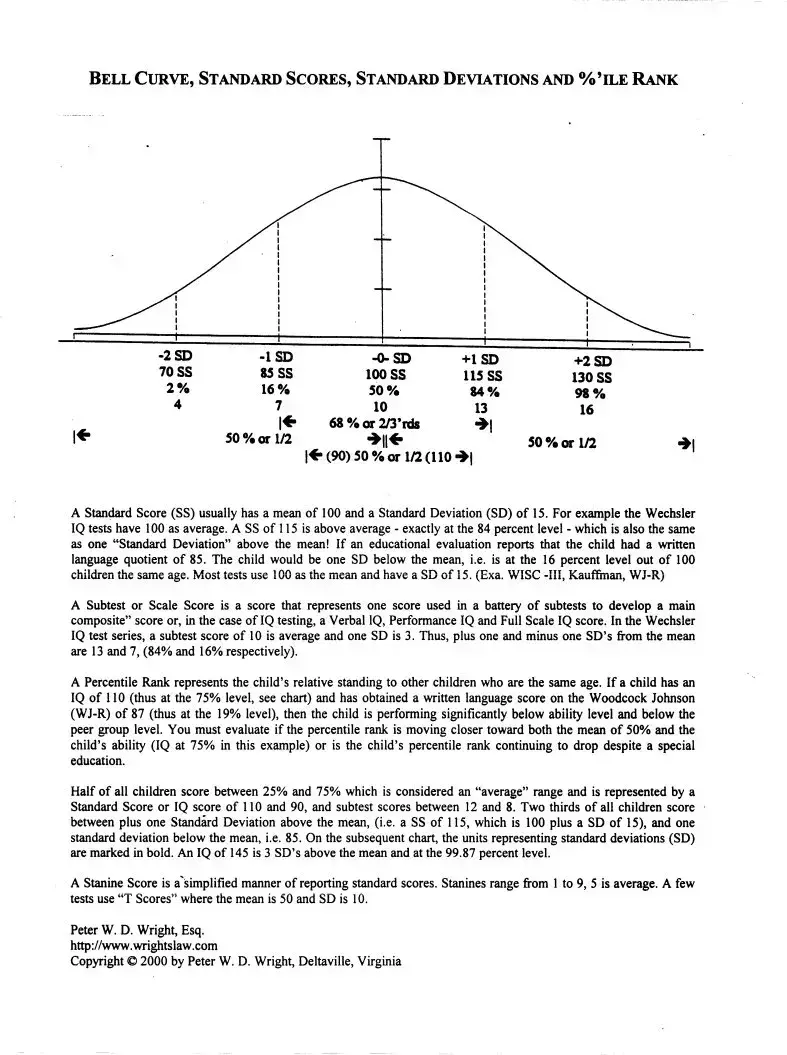What is a Bell Curve?
A Bell Curve, or normal distribution, is a graphical representation used in statistics to show how values of a variable are spread. Most scores cluster around a mean, with fewer scores appearing as you move away from the average in both directions. This curve is shaped like a bell, hence the name.
What does a Standard Score (SS) mean?
A Standard Score (SS) expresses a score's relationship to the mean score, typically with a mean of 100 and a standard deviation (SD) of 15. For instance, a score of 115 is one standard deviation above the mean, indicating better performance than about 84% of the population.
How is the Percentile Rank calculated?
Percentile Rank indicates how a specific score compares to others. For example, if a child has a percentile rank of 19%, that means they scored better than 19% of their peers. This measure helps to evaluate a child's performance relative to others in the same age group.
What is a Subtest Score and how is it different from a Composite Score?
A Subtest Score is an individual score from a test that usually consists of multiple parts. In the context of IQ tests, a Composite Score represents an overall score derived from several Subtest Scores, such as Verbal and Performance IQs.
What does a Standard Deviation signify?
Standard Deviation (SD) indicates how much scores deviate from the mean. In most testing contexts, a score that is one SD above or below the mean signifies a notable difference. For example, a standard score of 85 is one SD below the mean, which indicates lower performance compared to the average population.
What is the purpose of different types of scores, like Stanine and T Scores?
Stanine Scores condense standard scores into a scale of 1 to 9 for easier interpretation, where 5 is average. T Scores are another form, usually with a mean of 50 and a standard deviation of 10, helping to present data in a simplified manner while maintaining accuracy.
How can I assess a child's progress using these scores?
By comparing a child’s scores over time, you can evaluate their progress. For example, if a child's Percentile Rank increases, they are improving in their performance relative to peers. Conversely, a declining rank may indicate the need for additional support.
What should I consider when interpreting these scores?
It's crucial to consider each score in context. A child's IQ score might be high, but if their subtest scores are significantly lower, this discrepancy could signal areas needing attention. Look for trends in the scores over time rather than focusing on a single result.
What is considered an average range for children's scores?
The average range for children's scores typically falls between the 25th percentile and the 75th percentile. This corresponds to a Standard Score of about 90 to 110. Scores within this range indicate typical performance compared to peers.

